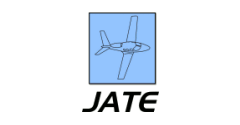Author Background
Seock J. Hong is an Assistant Professor of Aviation Logistics at the University of North Texas (UNT). Prior to joining UNT, he was a Professor at the Kedge Business School, Bordeaux in France, and an Associate Professor at the Incheon National University, Korea. Dr. Hong also has 16 years’ experience in the aviation industry, safety, airport and airline risk management.
Dr. Hong received a B.S. in Industrial Engineering from the Ajou University (Korea) in 1988, an M.S. in Transport Economics from the Ecole Nationale des Ponts et Chaussées (Paris, France) in 1996 and a Ph.D. in Economics from the University of Toulouse I (France) in 2001 specializing in the industrial organization of airlines.
Dr. Woongyi Kim is a Professor at Hanseo University, Korea. He is an advisory committee member of Korea Airport Corporation and an academic director of Aviation Management Society. Dr. Kim has a Ph.D. in transport engineering from the Hanyang University, Korea, and an MS in air transportation science from Korea Aviation University. His research interests include airport operation and aviation safety management.
Mr. Joiner is a Principal Lecturer (Logistics) and holds an MS from the University of Arkansas and a BBA from Texas Tech University. Mr. Joiner has owned or served as general manager for several aviation service and marketing businesses. He also worked in sales and marketing for Pratt and Whitney and General Electric jet engine programs. He teaches and builds coursing in the Aviation Logistics area. In addition to his teaching duties, Mr. Joiner is the faculty sponsor to two (2) student associations–Alpha Eta Rho International Aviation Fraternity and the student chapter of AAAE (American Association of Airport Executives).
Abstract
The sudden increased need for qualified pilots can cause potential risks for aviation training schools in South Korea because new pilot training programs need to be created, or existing organizations need to be expanded quickly. This study investigates safety culture at pilot training schools, builds a conceptual framework, and identifies the relationship between the sub-safety culture category and safety culture level in commercial pilot training schools. The authors survey the safety culture and management for the organizational aspect of these pilot training schools to clarify essential concepts and generate a conceptual safety management model. The authors examine the differences in safety culture between pilot training schools in the USA and South Korea and the effects these differences have on the organizations. Results show that the safety culture between pilot training schools in north Texas in the USA and South Korea is different. A pilot training school has to have a well-defined safety culture and management procedures in place and an awareness of the diverse cultural backgrounds of its student pilots to avoid potential cultural clashes and needless accidents/incidents.
Recommended Citation
Hong, Seock-Jin; Kim, Woongyi; and Joiner, Steve S. Mr.
(2022)
"Organizational Safety Culture in Pilot Training Schools: Case of North Texas in the USA and South Korea,"
Journal of Aviation Technology and Engineering:
Vol. 11:
Iss.
1, Article 4.
Available at: https://doi.org/10.7771/2159-6670.1231
DOWNLOADS
Since January 25, 2023
COinS


